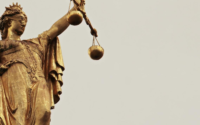WEB INACCESSIBILITY FOR THE DISABLED DURING COVID-19: AN ANALYSIS
This Article is written by Simran from Mody University of Science and Technology, Lakshmangarh, Rajasthan and curated by Dheepika R from ICFAI Law School, Hyderabad.
Web accessibility is crucial in our new era of social distancing as it covers almost every sphere of life. Humanity never before has faced such digital dependence to access the information but today most of our daily routine revolves around social media as with communities all over the world not sure as to how long they will be homebound, people are increasingly headed towards online classes (virtual classes), shopping, alerts, information, entertainment. A little known but most concerning condition is millions of people with disabilities in India are struggling to use websites that most of us take for granted. We need to think about disabled people who are in special need of assistance when it comes to shopping in brick and mortar shopping as they are excluded from gaining access to websites and social media platforms concerning the public at large and obligations by international. Below is a wide-ranging analysis of this situation.
The Ministry of Statistics and Program Implementation, also known as NSO performed a survey on disabled people within the space of six months starting from July to December. After the research had been done its outcome shows that the population of disabled people in India is Around 29,700,000 with a frequent rate of 2.2 percent.
Moreover, many persons with disabilities rely upon the regular home delivery of necessary items like medication, food, and hygiene products also. Therefore, in addition to the adverse impact of social distancing and support networks, if retailers and service providers do not ensure the accessibility of their online information it may put at risk on their lives due to lack of access to vital information. For most people accessibility is limited to the immediate physical environment but contrary accessibility should entail the digital world and mainly include various components like online documents, websites, apps, online broadcasts, and other communication platforms and devices. However, not everyone can access the series of new information and developments and many programs like “Start-up-India” and “Digital India”. These programs raise the digital economy in the country, but a considerable part of the economy still lacks access to the digital world.
The Rights of Persons with Disabilities Rules (2017) and The Rights Of persons with Disabilities Act (2016), it is mainly established to help disabled individuals access websites.
Background of the Law:
According to Section 42 of Right to persons with disabilities Act, 2016, the government is responsible for
- Ensuring that every content in electronic, print and audio media are accessible and,
- Ensure that electronic media are accessible to the disabled individuals by offering sign language interpretation, audio description and close capturing and,
- Ensuring that universal design is used for providing digital equipment and techniques for the daily used necessities.
Under the rule 15 of rules, to ensure the information and communication technology are accessible some specific requirements are stated in agreement with section 42 and according to rule 25 every establishment must act according to the requirements:
- Requirement no. 1is that According to instructions for Indian government websites, the websites must follow some rules and regulations specified in the Department of Administrative Reforms and Public Grievances.
- Requirement No. 2is that Electronic Publication based pdf must be permissible format for uploading any document.
On 1st October 2017 Convention on the Right of Persons with Disabilities was ratified. The main aim of Disabled law is to safeguard people with disabilities from every kind of segregation, biased, and discriminatory behavior and also to promote proper accessibility and opportunity equality among every citizen. In 2012, a study of ten government websites was conducted for promotion of employment for disabled people and a barrier break. So the results came out that web accessibility guidelines are not followed by main and affiliated websites. Several millions of disabled individuals are not able to access and enjoy the same privilege which other people are transacting online.
Case Law:
In one of the famous cases named Jeeja Ghosh v. Union of India, the Supreme Court said the immediate shift in disability discourages charity and medical models. Although people with disabilities are now considered as the subject with rights granted to persons under the Right of Persons with Disabilities Act, 1995 which formed human rights in themselves as human rights are considered as the fundamental rights or legal rights.
Status quo and the way forward:
Despite the government standing on its ground regarding the use of Aarogya Setu and the NGOs and activists stating that the contact-tracing app for COVID-19 is not usable for the disabled, the app remains inaccessible to people with disabilities.
Considering that section 24(1) of the Act explains that one of the government’s crucial economic capacities is to ensure the realization of the disabled’s rights, this uncertain fear of the unexpected remains a real thing. According to Section 20(2), the government is responsible for providing reasonable accommodation at workplaces, aside from private bodies.
Nevertheless, Assam has actively and progressively played its role in disseminating information in an accessible format for the disabled, which is a commendable move. After assessing the websites that hold releases about the curfew, it is believed that the adopted interface remains inaccessible for a specific group of people with hearing impairment, low-vision, mental illness, muscular dystrophy, learning disabilities, and leprosy cured individuals.


